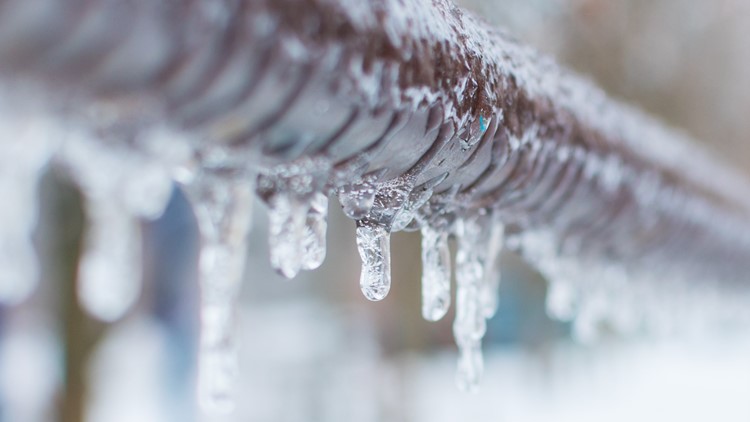Are you looking for advise about How to Prevent Your Pipes From Freezing?

Winter can wreak havoc on your pipes, particularly by freezing pipes. Below's exactly how to stop it from happening and what to do if it does.
Intro
As temperature levels drop, the danger of icy pipelines increases, potentially bring about costly repair work and water damages. Recognizing just how to prevent icy pipelines is essential for home owners in cold climates.
Avoidance Tips
Protecting vulnerable pipelines
Cover pipes in insulation sleeves or utilize warmth tape to secure them from freezing temperature levels. Focus on pipelines in unheated or exterior locations of the home.
Heating methods
Maintain indoor areas adequately warmed, specifically locations with plumbing. Open up closet doors to enable warm air to flow around pipes under sinks.
How to recognize frozen pipes
Try to find decreased water circulation from faucets, uncommon odors or sounds from pipes, and noticeable frost on subjected pipelines.
Long-Term Solutions
Structural changes
Think about rerouting pipelines away from outside walls or unheated areas. Include extra insulation to attics, cellars, and crawl spaces.
Upgrading insulation
Purchase high-grade insulation for pipes, attics, and wall surfaces. Correct insulation helps maintain constant temperature levels and lowers the risk of frozen pipes.
Securing Exterior Pipes
Yard tubes and outdoor faucets
Disconnect and drain garden hoses before winter. Install frost-proof faucets or cover exterior taps with shielded caps.
Comprehending Frozen Pipes
What causes pipelines to ice up?
Pipes freeze when exposed to temperature levels listed below 32 ° F (0 ° C) for prolonged periods. As water inside the pipelines freezes, it expands, taxing the pipe walls and possibly triggering them to break.
Dangers and damages
Icy pipes can bring about supply of water disruptions, building damages, and pricey fixings. Ruptured pipelines can flooding homes and cause substantial architectural damages.
Indicators of Frozen Water Lines
Identifying frozen pipes early can avoid them from rupturing.
What to Do If Your Pipelines Freeze
Immediate actions to take
If you think frozen pipes, maintain taps available to ease pressure as the ice melts. Make use of a hairdryer or towels taken in hot water to thaw pipelines gradually.
Final thought
Avoiding icy pipelines requires proactive procedures and quick feedbacks. By comprehending the causes, indicators, and preventive measures, home owners can secure their pipes during winter.
6 Proven Ways to Prevent Frozen Pipes and Protect Your Home
Disconnect and Drain Garden Hoses
Before winter arrives, start by disconnecting your garden hoses and draining any remaining water. Close the shut-off valves that supply outdoor hose bibs and leave the outdoor faucet open to allow any residual water to drain. For extra protection, consider using faucet covers throughout the colder months. It’s also important to drain water from any sprinkler supply lines following the manufacturer’s directions.
Insulate Exposed Pipes
Insulating your pipes is an effective way to prevent freezing. Pipe insulation is readily available at home improvement stores and is relatively inexpensive. Pay close attention to pipes in unheated areas such as the attic, basement, crawl spaces, or garage. Apply foam insulation generously to create a buffer against the cold. You can also wrap your pipes in heat tape or thermostat-controlled heat cables for added warmth.
Seal Air Leaks
Inspect your home for any cracks or openings that could let in cold air. Seal any holes around the piping in interior or exterior walls, as well as the sill plates where your home rests on its foundation. Additionally, make sure to keep your garage door closed unless you’re entering or exiting. Leaving it open creates a significant air leak that can lead to frozen pipes.
Allow Warm Air Circulation
During cold snaps, it’s essential to allow warm air to circulate evenly throughout your home. Leave interior doors ajar to promote better airflow. Open kitchen and bathroom cabinets to help distribute heat consistently around the rooms. If you have small children or pets, be sure to remove any household chemicals or potentially harmful cleaners from open cabinets for safety.
Let Faucets Drip
A small trickle of water can make a big difference in preventing ice formation inside your pipes. When temperatures drop significantly, start a drip of water from all faucets served by exposed pipes. This continuous flow helps prevent the water from freezing. Additionally, running a few faucets slightly can relieve pressure inside the pipes, reducing the chances of a rupture if the water inside does freeze.
https://choateshvac.com/6-proven-ways-to-prevent-frozen-pipes-and-protect-your-home/

As a devoted person who reads about How To Avoid Freezing Pipes, I assumed sharing that excerpt was a good thing. In case you appreciated our page please be sure to share it. I treasure your readership.
Go Deal Now